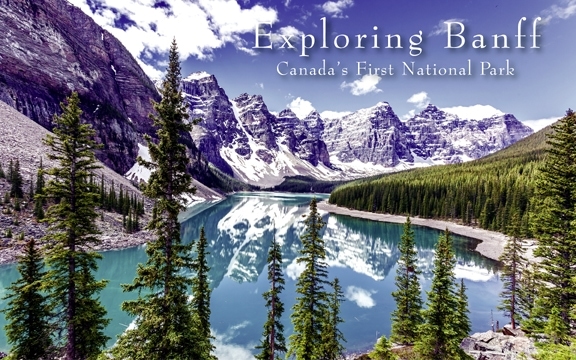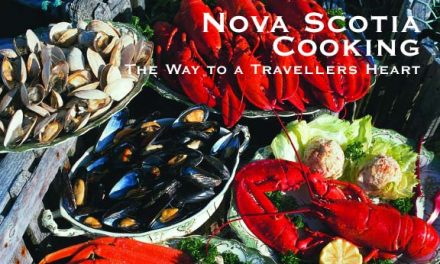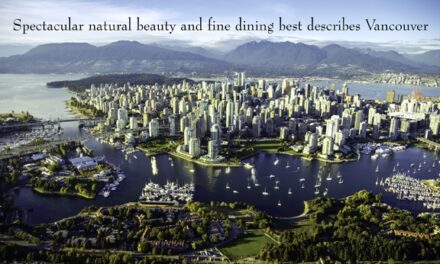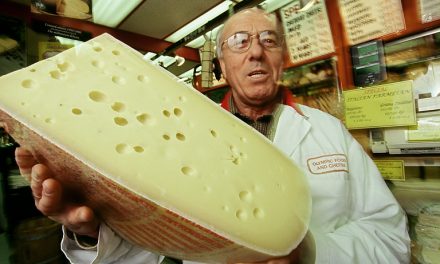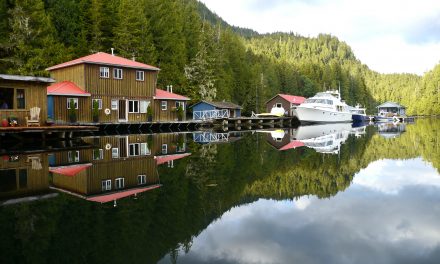Alberta
Exploring Banff – Canada’s First National Park
Article and photography by Jennifer Merrick

A strong odour, which smelled like peeled hard boiled eggs – a little on the rotten side—hit us as we entered.
“It’s not me; I had a bath,” joked our Parks Canada guide, Amar Athwal.
We were at the Cave and Basin National Historic Site, the birthplace of Banff National Park and Canada’s federal park system, which now encompasses over three dozen parks and 174,000 square miles of protected lands and waters. And it all came about because of this pungent odour. Well, more specifically, of where the smell was coming from — the sulphurous, emerald hot springs along the aptly named Sulphur Mountain in the Canadian Rockies.
Athwal explained that this area had a long human history and was known to indigenous nations for over 14,000 years. Europeans first discovered it in the late 1800s, when an explorer slipped in the marsh and discovered the water was warm.
“I’m sure they followed their noses as well,” said Athwal.
News of these magical waters travelled to the capital, and parliament passed an act to set aside ‘a hot spring reserve’ officially declaring it ‘for the benefit of all Canadians’, making it the country’s first protected natural space and the second in North America (after Yellowstone). In the 1930s, it was expanded, encompassing 2,564 sq. mi and became Banff National Park.
This mountain wilderness reserve proved to be a benefit not only to Canada but to the world. Each year, over 3.6 million visitors from around the globe come to awe at the stunning alpine landscapes and wildlife.
We experienced both and so much more on our visit to Alberta; I was even grateful for the smell, because that made it all possible. Here were some of the highlights:
Lake Louise
Banff’s most iconic of views is justifiably famous. The jade green colour of the glacial lake changes constantly depending on the light, but is always a jewel set in the towering peaks that surround it. Close to its shores is the Fairmont Chateau Lake Louise, a luxury historic hotel that looks like a castle out of a fairy tale.
After a leisurely hike along its shores, we lunched at the Lakeview Lounge, where it was hard to concentrate on the food with a window looking out at the mesmerizing views. About 30 minutes up the mountain was another unforgettable sight, the 20-dollar view of Moraine Lake. This glacial lake with its enchanting aquamarine colour, was the scene on Canada’s 20-dollar bill from 1969-1979.
Banff Gondola
Hiking up Sulphur Mountain that overlooks Banff takes close to two hours and is somewhat arduous, but the Banff gondola lifted us up above the clouds in a mere eight minutes. At the top, we strolled along the ridgetop boardwalk, where the atmospheric mist occasionally parted revealing glimpses of the mountain peaks.
In addition to the breathtaking views, there’s an interpretive centre, a theater, 360-degree observation deck and restaurants. Choices included Castle Mountain Coffee for a quick pick-me-up, Northern Lights for a market-styled eatery and Sky Bistro for an upscale dining experience.
Elk Encounters
Spotting wildlife is a huge draw for visitors, and park residents include bears, wolves, bighorn sheep, elk and coyotes. Of course, not being a zoo, there are no guarantees as we discovered well into our visit. The big-horn sheep that often hang out on the top of Sulphur Mountain by the gondola were nowhere to be seen. We kept our eyes peeled as we drove through the park; but as much as we enjoyed the scenery, not a creature stirred. Finally, at a scenic lookout point off Compound Road, I saw a yellow-furred mammal flitting through the trees. “Look!” I cried and grabbed a friend’s arm. And there it was –a golden retriever.
On our last day in Banff, we had yet to see any of its wild inhabitants. A local shared with us that one of the best places to spot wildlife was on the Fairmont Banff Springs Golf Course. It didn’t take long on our drive to be rewarded with the sighting of a lone bull with antlers so wide I half expected it to tip over. But as the biggest deer species alive at over 700 pounds, he could handle the rack that could grow over four feet above his head.
While we snapped pictures, he sauntered right in front of us. Then something amazing happened. He raised his head and emitted a sound the likes of which I had never heard before, a sound that I never would have expected from an animal this size. Not a deep roar or a booming trumpeting, but a shrill, high-pitched banshee shriek. These rutting calls are called bugles and are only heard during mating time.
Amazed, I wished him luck as he disappeared into the trees. He would need it since two minutes down the road, smack in the middle of the golf course, we spotted an entire heard of elk. About a dozen females, a few resting in the sand traps, and one very large lone bull stood in front, guarding his harem, ready to fight any competitors.
Note: this time of year, people have to be especially careful around these normally docile creatures. Parks Canada recommends three bus lengths of space.
Banff Sleeps and Eats
The town of Banff itself has a population of approximately 7,500 and accommodation that ranges from the luxurious and historic Banff Fairmont Springs to bed and breakfasts and hostels. There’s shopping and a sizable selections of cafes, eateries and restaurants. One in particular should be on your list (unless you’re a vegetarian). Chuck’s Steakhouse, a western-style restaurant, prides itself on their steak and for good reason. Their menu features a range of locally-sourced beef with an on-site aging room. Our waiter educated us on various cuts and preparations available and made recommendations based on our preferences. In the end, we shared a family-styled platter of prime, Wagyu and grass-fed steaks that were grilled to perfection.
We stayed at the Moose Hotel, which was impossible to miss because of the large sculpture of a moose in front. Their suites were spacious and had fully-equipped kitchens and fireplaces in the living area. Their rooftop pool was an ideal way to end a day of mountain exploring, and fitting considering that it was a hot bath that started it all.
Getting There and Things to do in Calgary, Alberta
As most visitors do, we flew into Calgary, Alberta, and rented a car. It’s a scenic 90-minute drive from the city to Banff. Parks Canada also offers a shuttle on summer weekends, and there are private transport options for those who prefer not to drive.
Many people go straight from the airport to the mountains. This is a mistake. Rooted in its western hospitality, Calgary has come into its own in recent years with a thriving chef-driven culinary scene, a creative arts and cultural community and festivals throughout the year.
Here are just a few ways to enjoy Alberta’s largest city:
Savour a meal at one of the city’s innovative restaurants. My favourite dining experiences were at Bread and Circus, Foreign Concept and Deane House.
Enjoy a cocktail or two. For a smaller-sized city, Calgary has made a big name for itself on the cocktail circuit gaining accolades and awards in international competitions. Stars on scene are Proof, Native Tongues, Klein Harris and Hotel Arts.
Stroll Calgary’s oldest neighborhood. Inglewood has art galleries, vintage shopping, nature preserves (including a bird sanctuary) and great dining.
Visit the pandas at the Calgary Zoo.
Discover the urban pathway along the Bow River by bike or on foot. Nomad Mobile Gear Rental outfitters offer tours that show Calgary’s impressive networks of trail.
And if you happen to be here from July 5 to 14th, join the city’s biggest party –The Calgary Stampede.
www.travelalberta.com

